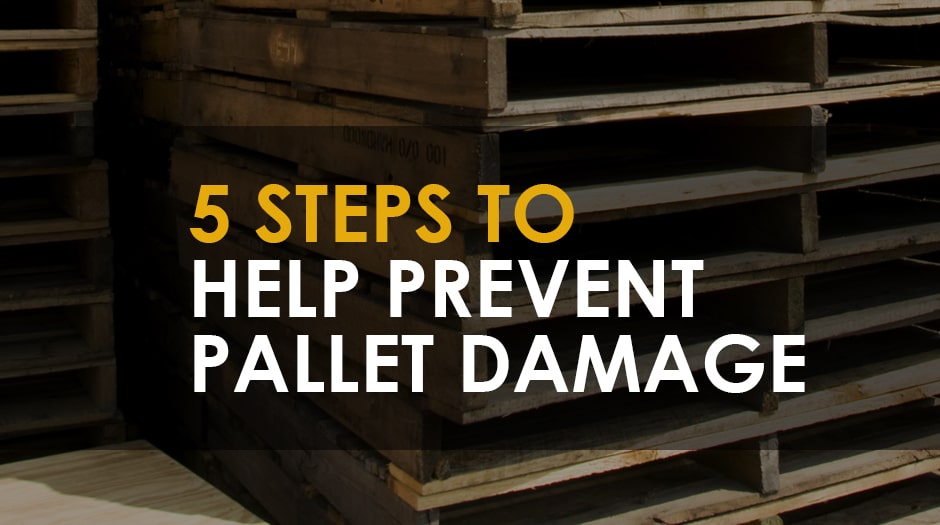
We have outlined 5 actions below that you can take when preparing your shipment that will help extend the life of your wood pallets.
Actions You Can Take to Help Prevent Pallet Damage
1 – Ensure you are using the correct pallet
Size, Grade, and Pallet Design are the most important factors in determine if you are using the correct pallet to support your products.
Size is important because a pallet that is too small may not have the strength or ability to support all of your product. A pallet that is too big may allow for extra space between the product and the edge of the pallet – which can compromise the strength of the pallet. If your products do not fit the most common pallet sizes, Kamps Pallets can design and build custom pallets to meet your exact needs.
Pallet Grades are important because they signify the quality of the pallet and repairs may have been done to it.
2 – Proper Inspection of the pallet
Once you have determined that you are using the correct pallet, a proper inspection before loading products is important and can help prevent pallet damage.
During your inspection, you will want to check for any loose boards or damaged parts that can easily crack. Loose boards and damaged parts can damage your product during shipment. They can also cause the pallet to break or bend. If your pallet does have loose boards or damaged parts, you have two options. You can either repair the pallet or use a different one. The more cost effective option is usually going the repair route.
It is also important to check if the pallet has absorbed any moisture before loading your products onto it. Moisture can compromise the integrity of your pallet. If you are coming across many moisture affected pallets, consider using treated pallets or improve your overall storage capabilities.
3 – Properly Trained Employees
Having properly trained employees that know how to handle pallets can also help prevent pallet damage.
Below are five best practices your employees should follow when handling pallets:
- Ensure that the product is flush to the end of the pallet.
- Lift, don’t push, when transporting empty pallets.
- Stack Pallets Evenly.
- Ensure your forklift drivers fully clear the pallet before turning.
- Ensure that forklift operator is entering the pallet at an appropriate speed.
4 – Warehouse Design
A warehouse that is optimized for pallets moving around inside of it can help prevent pallet damage.
Below are three things to look out for when evaluating the design of your warehouse:
- Aisles are wide enough for your pallets and forklift.
- There is enough space to store pallets under cover
- Clutter in the warehouse is minimized and floor is free of debris.
5 – Equal Commitment From Your Customers
Once you have done everything in your power to minimize damaged pallets, it is important to ensure equal commitment from your customers. This is especially important to those participating in certain pallet rental or management program.
Feel free to ask your customer about their own best practices in regards to preventing damage, or send them this article directly.
Takeaway:
Preventing damage to your pallets is a process that is prevalent in each step of shipping – from preparation to handling after delivery. Ensuring that everyone is on the same page and understands the importance of minimizing damage is your best chance at implementing all five steps. Once you have implemented all five steps, it is also important to remember that pallets will not last forever. Preventing pallet damage is about extending the life of your asset.
